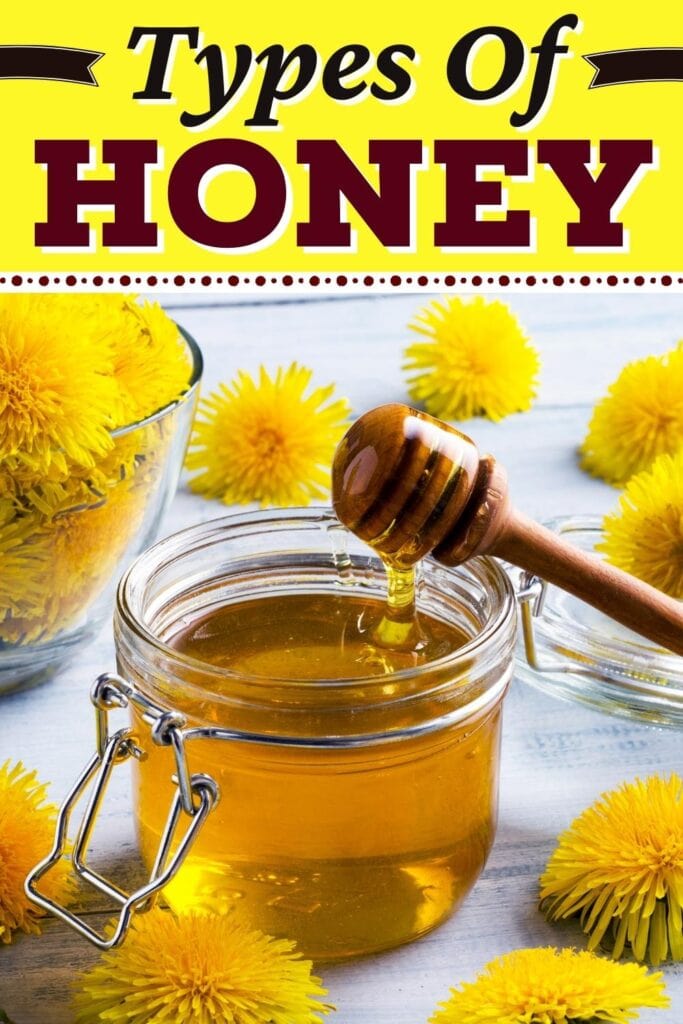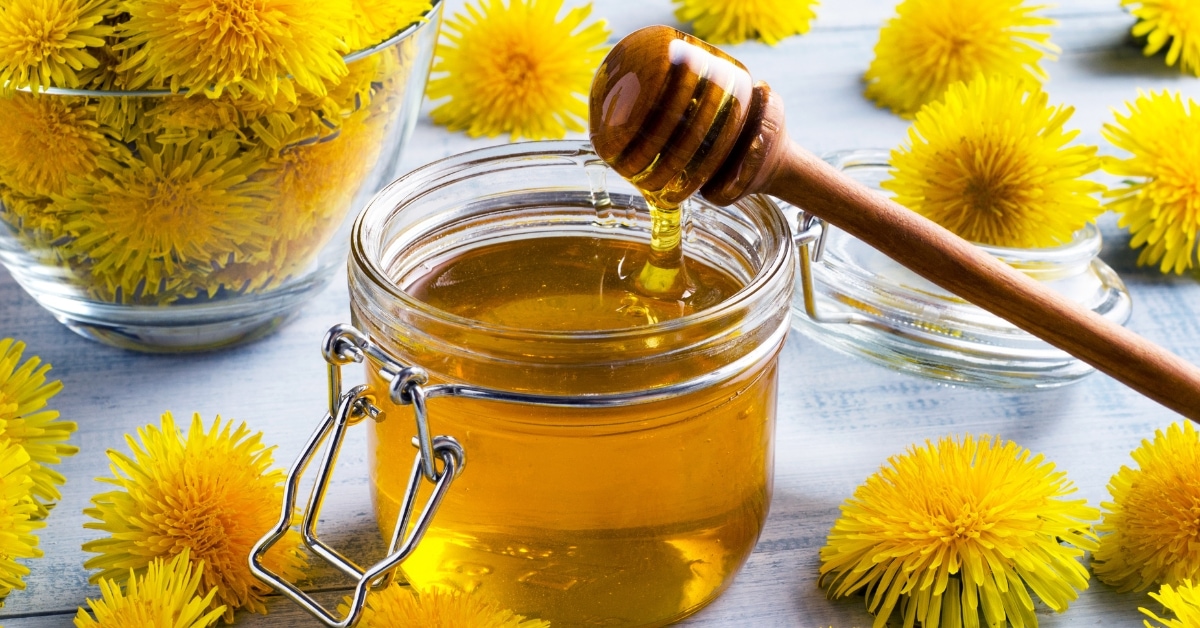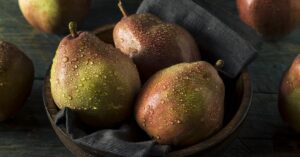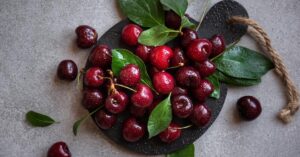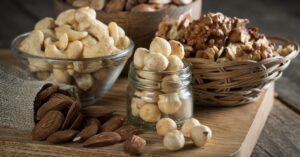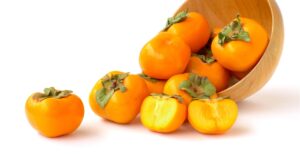So you know where honey comes from. But did you know that different flowers make different types of honey?
That’s right. Each flower makes its own unique honey with varying colors and flavors.
Plus, not all honey is meant to be used as food.
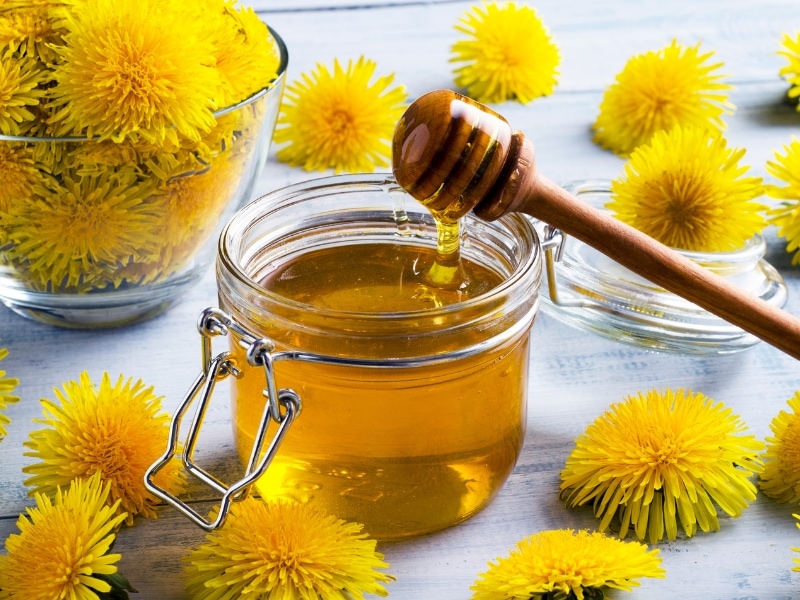
Honey is known for its antibacterial properties. Some varieties have more medicinal effects than others.
Some honeys are quick to crystallize while others stay nice and gooey for quite some time.
Some are better for baking while others are better for hot tea.
No matter what you’re looking for, these types of honey will bee delicious.
1. Buckwheat
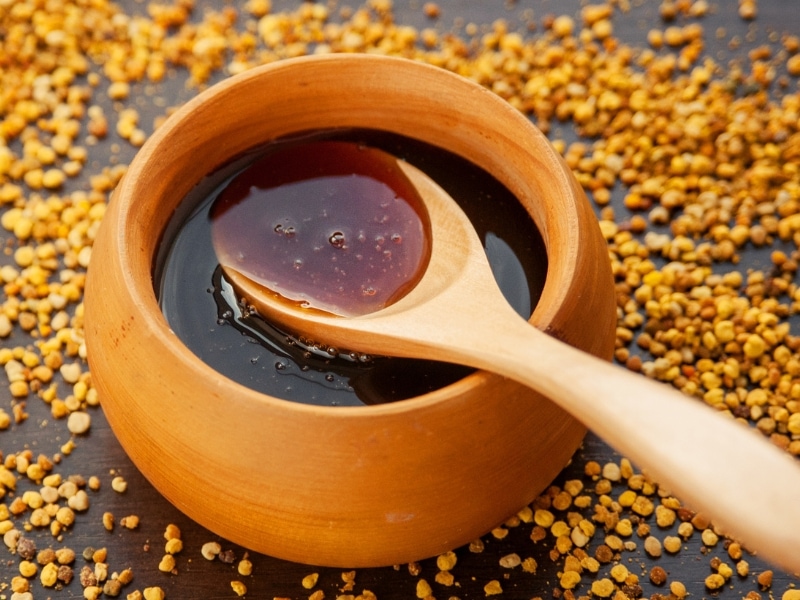
Buckwheat honey is somewhat unique. It’s most commonly made in the northern United States and Canada.
It’s known for its distinct flavor and color as it looks a bit like molasses.
The rich, dark color and intense flavor make it perfect for baking or cooking.
Although buckwheat honey isn’t usually used in its raw form, it has great antibacterial properties.
It can clear up infections and is rich in antioxidants. Try it when you have a sore throat.
Use buckwheat honey as a marinade for meats. It can add tons of flavor to your meal.
2. Acacia
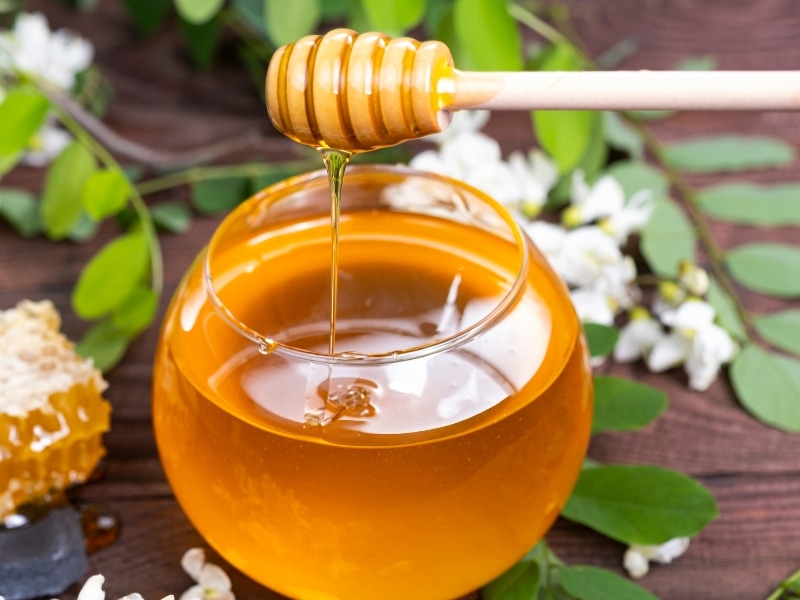
Contrary to its name, acacia honey does not come from the acacia tree.
It actually comes from the black locust tree that grows in North America and Europe.
Despite the slight misnomer, acacia honey is super sweet and delightful.
It has the typical honey flavor with ever-so-subtle floral notes.
Color-wise, acacia honey is a light amber color. It crystallizes slower than most other honeys, so expect it to stay liquid longer.
Acacia honey also has strong antibacterial properties that make it useful for treating skin issues.
3. Clover
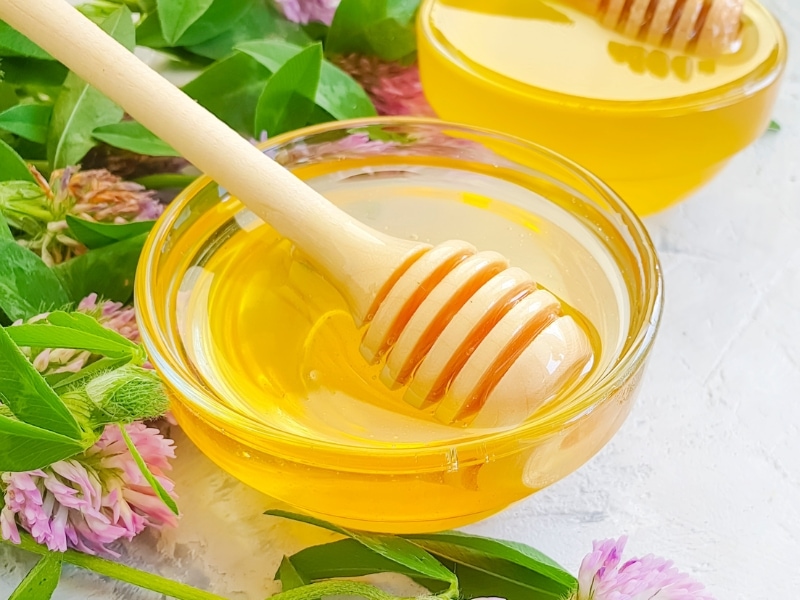
Clover honey is the most common type of honey across all of North America.
However, it originates from New Zealand and Canada.
Bees love clover, Since it’s usually not scarce in the spring, clover honey is widely available.
Clover honey has beautiful floral notes and a distinctly sour aftertaste.
That being said, it’s generally light and mild in flavor. You can use it in so many different ways.
This type of honey is rich in flavanols and phenolic acids that support the heart, lungs, and nervous system.
4. Eucalyptus
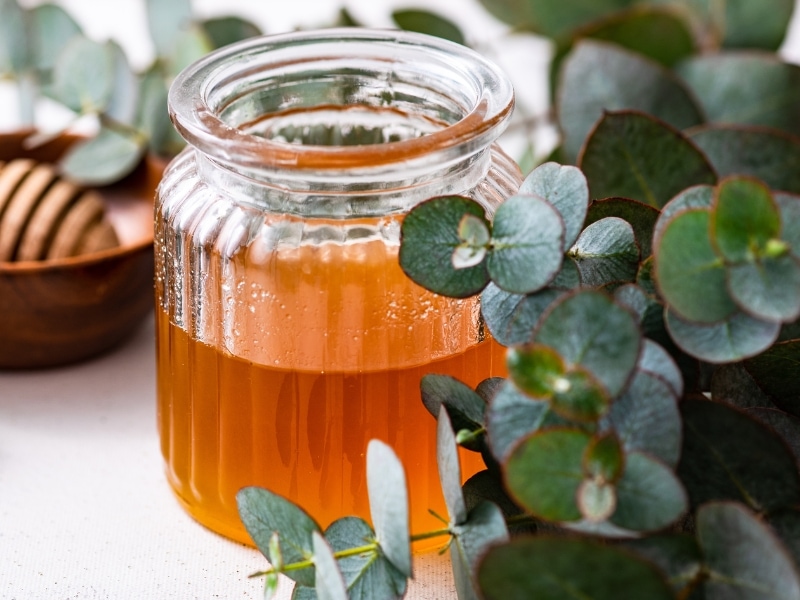
Eucalyptus honey originated in Australia but can often be found in the U.S.
If you’re familiar with eucalyptus, you might guess that this honey has a unique flavor.
Due to its origin, eucalyptus honey has a slight menthol flavor. It tastes rather herbal and medicinal.
Don’t let it scare you though because this honey can do wonders for a cold.
Since eucalyptus honey is best for its homeopathic properties, it’s not typically used in cooking.
Use it for tea or straight from the spoon when you’re feeling under the weather.
5. Orange Blossom
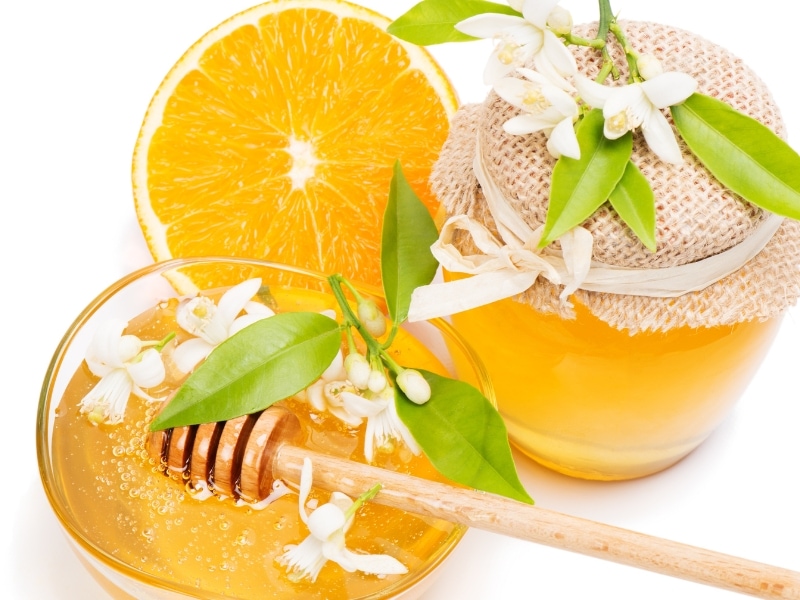
Orange blossom honey is a light and sweet honey variety. It’s most common in Spain and Mexico.
However, it can easily be found in warmer regions of the United States.
California and Florida are the two main American producers of orange blossom honey.
Where citrus fruits grow, this honey will be there, too!
This honey is soft and delicate with subtle citrus flavors. It’s wonderful when used for tea or baking.
Drizzle it on top of some yogurt for extra sweetness that’s just heavenly.
Orange blossom honey is also a delightful addition to ice cream, oatmeal, or pancakes.
6. Fireweed
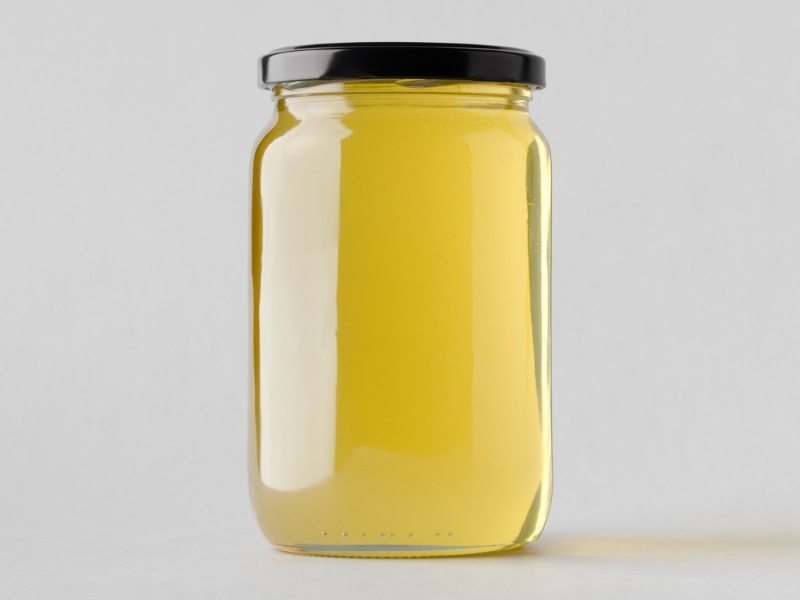
Fireweed is a perennial herb that commonly grows in the Pacific Northwest and Alaska.
You can easily find fireweed honey in these areas but it may be more difficult to find in other parts of the world.
Fireweed honey is a beautiful light golden color. The flavor is more complex and buttery.
It’s the perfect honey for cooking and especially grilling.
Fireweed honey makes a fantastic addition to marinades and meat glazes. It also tastes wonderful in baked goods.
Use it to add sweetness to your sauces and marinades. Firewood is a great choice if you can find it.
7. Tupelo
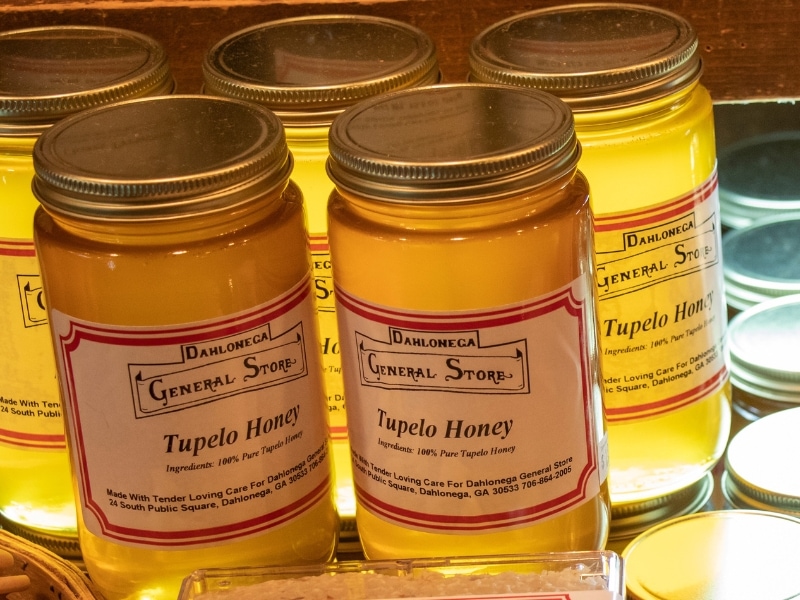
Tupelo honey is mainly produced in swamp areas of the United States. It can quickly be found in Florida and Georgia.
This light amber honey has an incredibly sweet flavor that’s smooth, mild, and buttery.
Tupelo honey is difficult to harvest and the season is rather short.
Because of this, it can get expensive but it’s definitely a must-try at least once.
It contains the same antibacterial and health properties as most other honeys.
However, I would save this one for special occasions and delicious recipes.
Serve it with aged cheese and delicious warm bread. Why not give the best honey the best pairings?
8. Sage
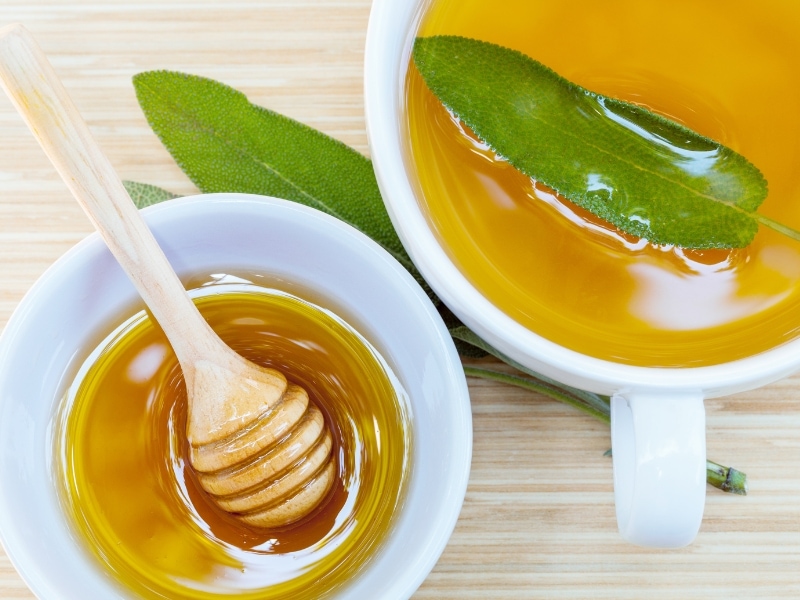
Sage honey is typically produced in California but can be found almost anywhere.
It’s usually easy to spot at any local grocery store.
Sage honey is very slow to crystalize and therefore, easy to use in most recipes.
It’s pretty light-colored with a typical honey coloring.
It’s also very mild and light. It’s a great option for cooking, baking, or teas since it has a pleasant flavor.
Sage honey is versatile and easy to find. It’s a good one to keep stocked in your pantry.
Honey and goat cheese is one of my favorite appetizers. Add sage honey to your next charcuterie board for some sweetness.
9. Wildflower
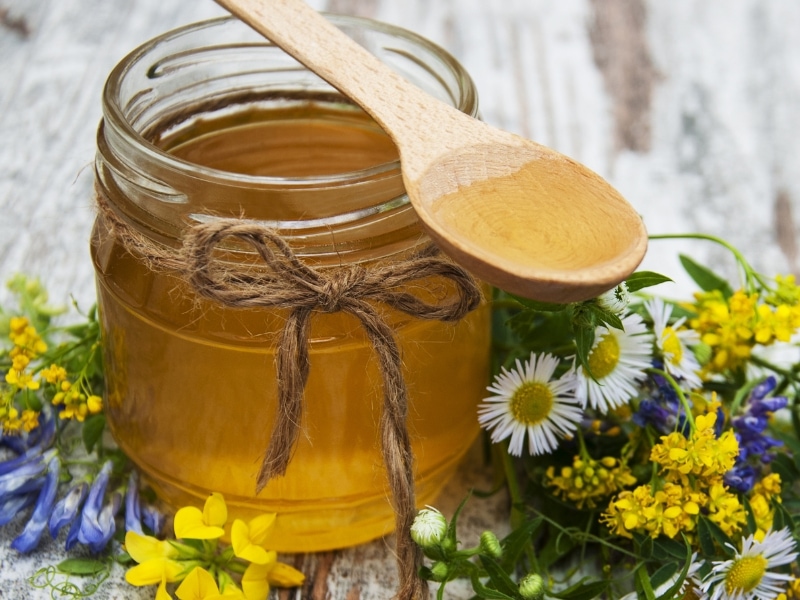
I personally find wildflower honey very interesting.
Since wildflowers are, well, wild, the flavor of this honey can vary greatly. The same goes for its appearance.,
Because of its unpredictability, it’s helpful to try it before you buy it when possible.
If you buy it at a farmers market, they usually have samples available.
Generally speaking, wildflower honey is usually light in color and has a rich, fruity flavor.
Wildflower honey has tons of antioxidants. It’s even thought to possibly reduce seasonal allergies.
I find this ironic since it comes from pollination and flowers that cause seasonal allergies.
10. Dandelion
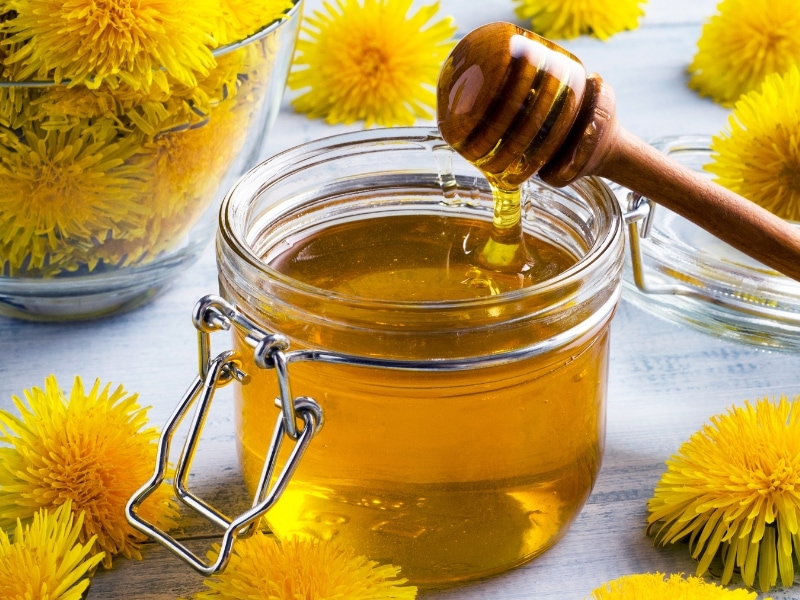
Dandelion honey is not as common as most other types of honey. If you can find it, you’ll love it.
I would try looking at your local farmer’s market or beekeeper.
Dandelion honey is much darker in color than other varieties.
It’s a beautiful deep amber. This honey also has a more intense flavor.
This type of honey does crystalize rather quickly so expect it to be a bit grainy.
That being said, the floral and slightly tart flavor is a real treat.
You have to buy dandelion honey if you find it.
11. Manuka
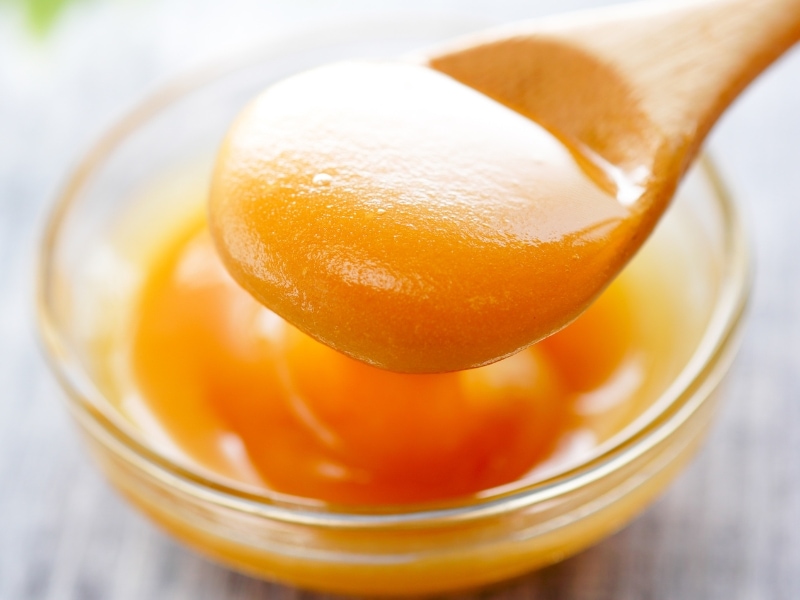
Manuka honey is well-known for its fantastic antibacterial properties.
It comes from the tea tree bush and has similar effects to tea tree oil.
Manuka honey is the only honey that the FDA has approved for the treatment of wounds.
Since the FDA hardly approves homeopathic remedies, I’d say that’s really saying something.
Along with the treatment of wounds, manuka honey is also recommended for good oral hygiene.
However, manuka honey might be a bit of an acquired taste.
Add it to tea to enjoy the medicinal qualities but it’s not well suited for cooking.
12. Linden
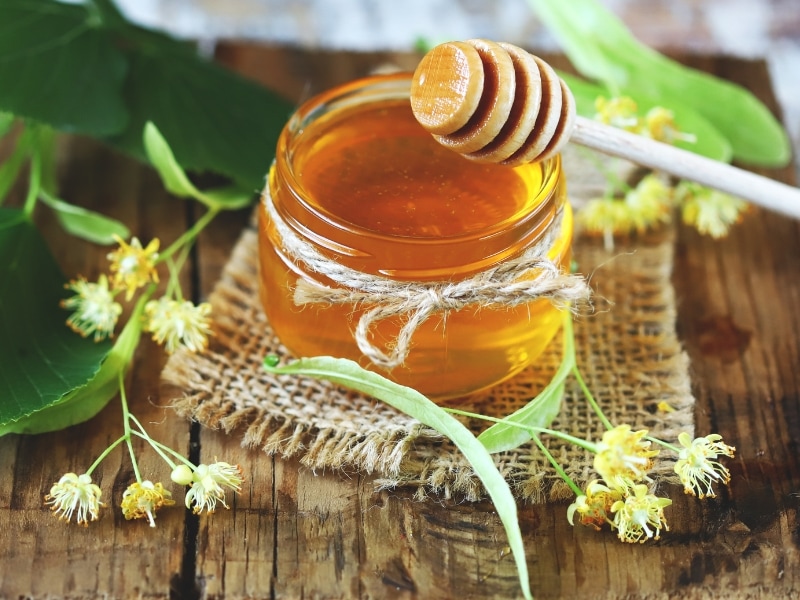
Just like the linden blossoms, this honey is sweet.
Linden honey is mostly harvested throughout Europe and is easily found there.
With a pale yellow color, this honey is mild tasting, bright, and herbaceous.
It’s balanced and floral. It’s a really heavenly honey variety.
Linden blossoms themselves contain some plant compounds known for having sedative properties.
Therefore, linden honey can be used to reduce anxiety and prepare you for bedtime.
You can make a delicious tea with linden honey. It’s the perfect cozy nighttime beverage.
Linden honey also makes a fantastic-tasting mead. If you find linden honey, I highly suggest taking some home.
13. Sourwood
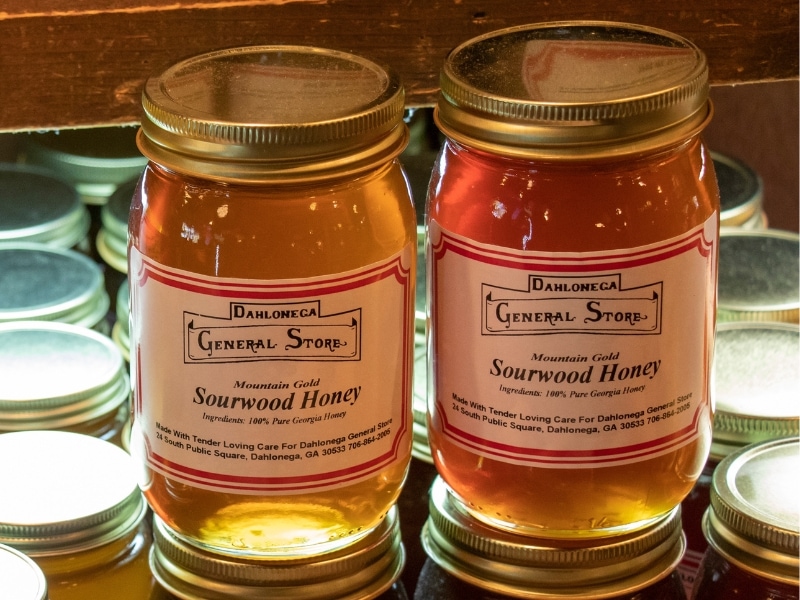
Sourwood honey is an American variety of honey.
It comes from the sourwood trees that are most common in the Southeast and Midwestern parts of the U.S.
Despite its name and origin, sourwood honey is sweet and buttery. It has a rich caramel flavor with a hint of spice at the end.
Sourwood honey is a rich amber color that is truly beautiful.
It’s one of my favorite types of honey to eat and add flavor to recipes.
Try this honey on biscuits with butter, drizzle it on some frozen yogurt, or spread it on toast.
Or you can skip all of that and just eat spoonfuls.
